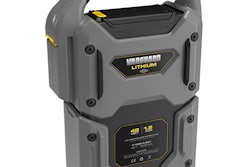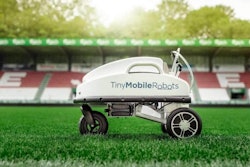Living in Wisconsin, winter is an event we prepare for every year. We pack up the patio furniture, winterize plants, clear out gutters, get out the storm windows, have the fireplace inspected, put a bag of cat litter in the trunk of the car, dig out the winter gear, tune up the snow equipment… the list goes on. But this year, it seemed all for not.
At the time I write this, I think the southern U.S. states have gotten more snow this winter than my small sliver of Wisconsin. It was nice to “take a winter off” this year. I get it, warm states. But now, here we are—March 20 marks the first day of spring, and there’s plenty of work to be done preparing for the changing seasons.
Checklists
Who doesn’t love a good checklist? Well, some people don’t I guess, but checklists are a simple, powerful tool to keep professionals on task and make sure details aren’t overlooked. And in this day of doing more with less, who couldn’t use a little help?
The two most important checklists for a landscape professional right now: Spring Cleanup Preparedness and Maintenance. Here’s what each of these covers:
Spring Cleanup Preparedness
Equipment: Look at your trucks, mowers, lawn tools, powered equipment and trailers. Make a note of what needs repair or replacement and make that expense now. A Maintenance Checklist (more on that in a moment) is helpful here.
Labor: The labor shortage remains an immense problem for the industry, so it’s important to look at the work you need to perform in the spring and recruit now.
Crew Checklist: This comprehensive jobsite checklist ensures your crew(s) don’t overlook any details. Now is a good time to review and determine if revisions are needed.
Scope of Work: Before you lock in your clients, go over your scope of services and update anything to clearly state what the customer should expect. What is your standard cleanup service vs. additional cost services? Don’t be afraid to offer bundled packages for higher margins.
Maintenance
Now is the perfect time of year to look at your fleet and equipment to determine what is going to make the team this year and draft any required replacements. This checklist will help you pin down your needs.
Manuals: Make sure you have one for each piece of equipment and give them a quick read through to recall safety features, troubleshooting ideas and basic maintenance list.
Tune-Up: Look over the machine for missing or damaged parts, tighten connections and nuts, change out filters, check safety features.
Blades and Cut Height: Sharpen or replace blades. Check blade balance and determine if the height-of-cut on your equipment is set properly.
Tires: Check tread wear and tire pressure. Remedy any issues.
Fuel: Prevent separation and corrosion with a fuel stabilizer.
Daily Checklist: (Yes, technically a fourth checklist) Equipment cleaning, blade check, lubrication, etc. for your crews and operators, and what they should do if an issue comes up.
While these checklists aren’t earth-shattering new ideas, they are a reminder that sometimes the simplest idea can have a big impact on what you do, keeping you on task. It’s equally important to keep these checklists updated to your changing business and equipment mix. Should you determine it’s time for something new, we’re here to help.
This month, Gigi Wood talked with manufacturers about the things landscaping professionals should look for when upgrading to higher-quality and larger mowers (pg.22). Take a look at this month’s Equipment & Technology column (pg.16), where Brant Kukuk discusses a few ways machines can help landscapers with workforce shortages. Lastly, Bryce Gill took on Equipment in Focus this month (pg. 36) where she discusses battery-powered equipment taking the lead in the landscape industry.
The bottom line this month is to focus on getting prepared for spring and giving yourself a leg up on success.


![Doosan Bobcat Wacker Neuson Stack 2ec Js Pb V6e[1]](https://img.greenindustrypros.com/mindful/acbm/workspaces/default/uploads/2025/12/doosan-bobcat-wacker-neuson-stack2ecjspbv6e1.CPyyz8ubHn.png?auto=format%2Ccompress&bg=fff&fill-color=fff&fit=fill&h=100&q=70&w=100)








![Doosan Bobcat Wacker Neuson Stack 2ec Js Pb V6e[1]](https://img.greenindustrypros.com/mindful/acbm/workspaces/default/uploads/2025/12/doosan-bobcat-wacker-neuson-stack2ecjspbv6e1.CPyyz8ubHn.png?ar=16%3A9&auto=format%2Ccompress&bg=fff&fill-color=fff&fit=fill&h=135&q=70&w=240)








